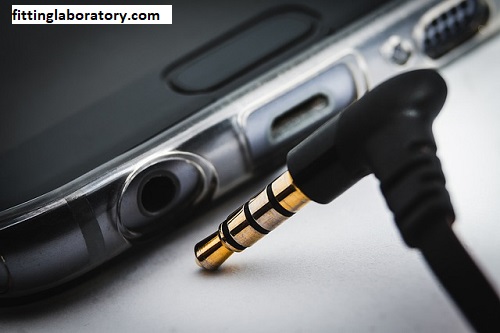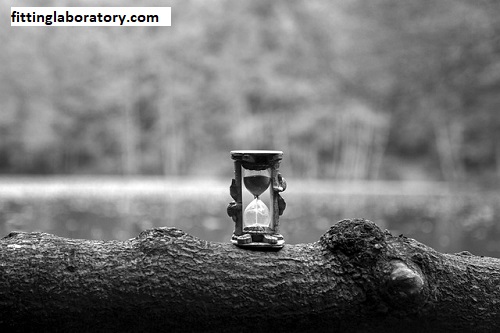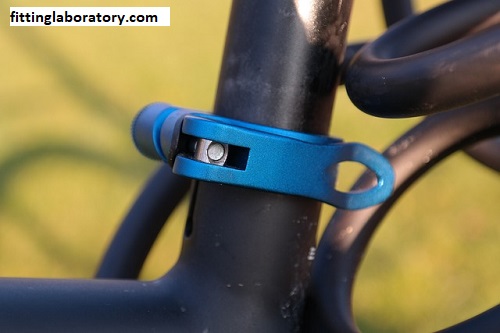Disconnect Fittings: An Introduction
Quick Disconnect Fittings:
Disconnect fittings mean quick connect or quick release fittings applied in almost all industries to make fast and efficient connections and disconnections of hoses, pipes, and other equipment. These fittings are efficient in streamlining workflows, ensuring safety, and enhancing efficiency because users can change or remove connections easily without requiring tools. This discussion explores the types, applications, advantages, and installation of quick disconnect fittings as well as a detailed FAQ section.

What are Quick Disconnect Fittings?
Quick Disconnect Fittings:
Quick disconnects are mechanical fittings to establish and relieve fluid transfer systems quickly. Part is fitted with a valve, and a female receptacle part is fitted with the male fitting to be received. After joining the parts together, an interference fit would then bring out a tight seal to allow for fluid flow. Disconnection is made through a simple mechanism that is simply activated by a push, pull, or twist.
Key Features:
Quick Disconnect Fittings:
- Ease of Use: Quick fittings have been manufactured to be used one-handedly, which makes them easy to use in many applications.
- Versatility: Used in different types of applications that include hydraulic, pneumatic, and plumbing systems.
- Safety: Many of the designs offer prevention against accidental disconnection, which makes the operation safe.
- Compatibility: Quick disconnect comes in various sizes and materials, thus keeping compatibility in various systems.
Types of Quick Disconnect Fittings:
Quick Disconnect Fittings:
Quick Disconnect fittings are one of several types because there is a specific function for each. Here are some of the most common ones:
1. Hose Quick Disconnects:
Quick disconnects are applied in garden hoses, air hoses, and hydraulic hoses. Fitted with hose attachments which prevent leaking and make easy attachment and detachment. Usually made from brass, stainless steel, or plastic.
2. Pneumatic Quick Disconnects:
Common pneumatic quick disconnects are compressed air systems, which can be highly used in air tool applications. They are of one-touch operation, and the materials used are those that are tolerant to high pressure.
3. Hydraulic Quick Disconnects:
Quick disconnects are made specifically for hydraulic applications. Hydraulic quick disconnects enable quick connections in hydraulic machinery and equipment. They can be useful and conveniently used when high pressure and flow rate is needed thus they can be effectively utilized in heavy-duty applications.
4. Chemical Quick Disconnects:
Chemical Processing These use resistant materials to chemical varieties. Ensure that chemicals can be transferred safely without spills or leakage.
5. Medical Quick Disconnects:
Quick disconnect, in medical use, plays an important role in various connections and disconnections, especially for most medical device assemblies, such as ventilators and IV systems, for patient security and hygiene.
6. Automotive Quick Disconnects:
Most of these fittings have their applications in automobile fuel lines and cooling. These provide the easy release necessary when making some repairs or replacements.
Quick Disconnect Fitting Applications:
Quick Disconnect Fittings:
Disconnects are utilized in several industries and applications. Some such include:
1. Manufacturing:
Quick connects are applied in manufacturing fluid transfer systems, hydraulic equipment, and air compressors that facilitate smooth workflow and fast replacement.
2. Automotive:
These fit configurations are vital in the car industries for their fuel lines, coolant systems, and pneumatic tools for easy repair and maintenance.
3. Building Construction:
Quick releases in building construction are used in hydraulic machinery, pneumatic tools, water supply systems, and their corresponding fast changes of equipment.
4. Medical and Healthcare:
In all medical health setups, quick-release fittings are used for medical gas lines, IV systems, and other numerous medical appliances to ensure quick and hygienic connection.
5. Food and Beverage:
Such rapid connectors are used for liquid transfer in the food and beverage industry for processing and packaging and prevent safety and health standards from being compromised.
6. Agriculture:
Quick-release fittings are used in irrigation systems to connect and disconnect hoses and various equipment.
Advantages of Quick Disconnect Fittings:
Quick Disconnect Fittings:

1. Time Efficiency:
Quick-release fittings take up very minimal time to connect and disconnect systems, hence increasing productivity.
2. Reduced Downtime:
Since they enable fast maintenance and repair, quick disconnects ensure that equipment has minimal downtime. This in turn increases efficiency in operations.
3. Flexibility:
They are available in different sizes and types of material. This allows the fittings to be readily available for several applications in diverse industries.
4. Improved Safety:
Quick disconnect fittings provide safety functionality that prevents accidental disconnection of the fittings. This improves the safety aspect of work.
5. Value for Money:
- Quick Disconnect Fittings cost very little compared to saving time, and man-hours, and losing very little during any possible downtime.
- Even though the initial cost of quick disconnect is somewhat higher than that of standard fittings, time saved and downtime saved also make it a cost-effective solution.
How to Install Quick Disconnect Fittings:
Quick Disconnect Fittings:
- Step-by-Step Installation Guide
- Pre Installation Process
- Fittings and hoses or pipes must be cleaned with debris removal.
- Proper size and kind of quick connector must be opted for the appropriate application.
Mounting Assemblies:
For hose fittings, slide the hose over the barbed end of the fitting, and secure it by tightening the hose clamp.
For threaded fittings, apply thread sealant to the male threads before screwing them into the female counterpart.
Attaching the Fittings
Ensure the male and female components are correctly aligned and push them together until they click into place.
Make sure the connection is tight:
Quick Disconnect Fittings:
Once fitted, it should be pressure-tested or flow-tested for leakages and proper functioning.
All the fittings should be inspected at regular intervals for wear, leakage, or any signs of damage. Replace all the worn-out parts for proper, safe working.
Common Problems and their Solutions:
Quick Disconnect Fittings:
1۔ Leakage:
Fix Solution: The right installation of the fittings and ensure that the seals are in good condition. At regular intervals, inspect the fittings for wear and replace the damaged ones.
2۔ Inability to Separate Ends:
Solution: Make sure to have the proper procedure for the disconnection of fittings. In case the fitting is held up, check for dust or damage.
3. Material Compatibility:
Solution: Use only quick disconnect fittings with materials that have compatibility with the fluids transferred to prevent chemical reactions or degradation.
FAQs About Quick Disconnect Fittings:
Quick Disconnect Fittings:
1. What are quick disconnect fittings made of?
Quick fittings can be made of any of the following materials: brass, stainless steel, plastic, or aluminum, depending on which application they are to be used for.
2. Can quick disconnect fittings be used with gas and liquids?
Yes, they apply to gases as well as liquids but take care to use only the correct fluid-specific fittings.
3. How do I know what size fitting to use?
It may depend on the size of the fitting you will need, which corresponds to the diameter of the hose or pipe you are hooking up. Measure the inner diameter of the hose and the outer diameter of the pipes to get the correct fit.
4. Can quick disconnect fittings be reused?
Quick disconnects are generally made of multiple uses but ought to be inspected quite frequently for signs of wear and tear to ensure safe operation.
5. How do I clean quick disconnect fittings?
Methods for cleaning depend upon the materials and the fluids used. A general soap-and-water solution often works, but always use the manufacturer’s instructions for specific cleaning guidelines.
6. What is the maximum pressure rating of a quick disconnect fitting?
The pressure rating differs by type and manufacturer. Always check the specifications for the fittings you are using to make sure that they are suited to your application.
7. Are quick-disconnect fittings safe for outside use?
Yes. Many quick-disconnect fittings are designed for outdoor use. Consider environmental factors including temperature, moisture, and chemical exposure when choosing fittings.
8. Are quick-disconnect fittings safe?
Quick disconnect fittings are safe to use when installed and properly maintained. Always follow the manufacturer’s guidelines and inspect regularly.
9. Which of the following industries utilize quick disconnect fittings?
Quick disconnects are widely used in various industries including manufacturing, automotive construction, healthcare, food and beverage, and agriculture.
10. Do you install quick disconnect fittings?
Yes, most quick disconnect fittings are very easy to install by anyone with basic mechanical aptitude. Just ensure you are following the instructions set forth by their manufacturers.
Conclusion:
Quick Disconnect Fittings:
Quick disconnects are parts essential for installation across a broad landscape of industries that come as a convenient and effective fluid transfer system solution. Their functionality, adaptability, and safety features make them an ideal solution for professionals looking to streamline their operations.

Understanding the types, uses, and installation methods of quick disconnect fittings will enable you to make decisions that would enhance efficiency and safety in your workflows. You might be working in manufacturing, healthcare, or any other segment, but quick disconnect fittings will ultimately improve your operational efficiency significantly.